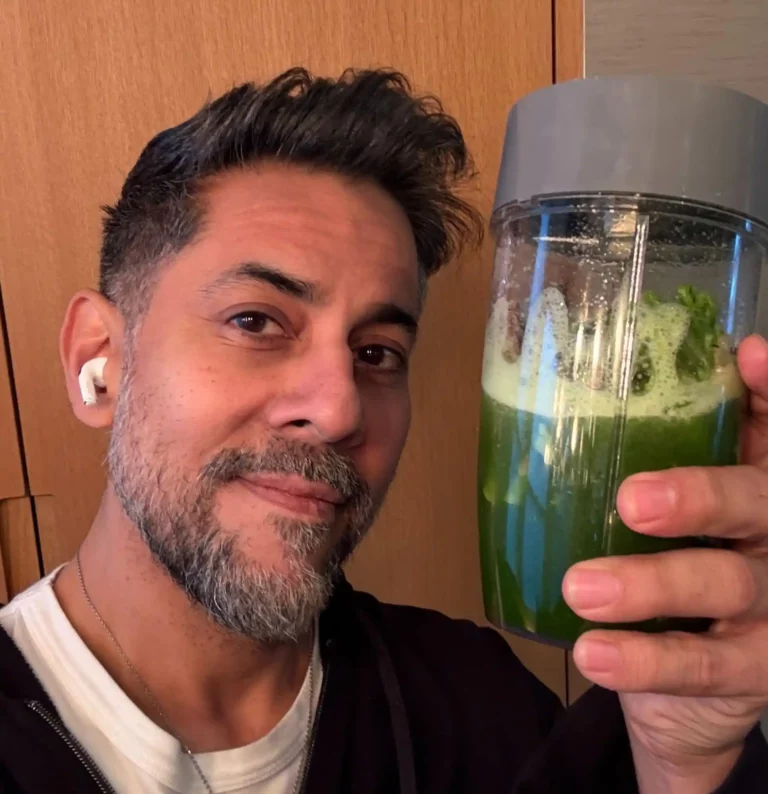I just came off the stage at a longevity conference here called the Hololive Summit to a standing ovation. Standing ovations are like spotting a unicorn in your backyard—magical, rare, and a joy to behold. Yet lately, they’ve been showing up at nearly every talk I give.
The secret? I started using a different formula for my talks—a five-step framework called S.P.E.A.K. that turns any speech into a full-blown transformation. Today, I’m handing you the keys.
Credit where it’s due: this formula comes from Eric Edmeades, our lead teacher in the Mindvalley Speaking & Influence Mastery Program (kicks off July 1). He taught me these deceptively simple moves, and they’ve become my “speech GPS.” I’ve taken the initial learnings from Eric and adapted them to my own style. What I’m presenting here is the essential model that you can copy, adapt, and apply to YOUR speeches.
It’s called the S.P.E.A.K. model.
Ready to SPEAK magic? Let’s go.
Who is this for?
- Startup founders pitching investors and craving that “where do I sign?” spark
- Team leaders tired of watching everyone’s attention drift in Zoom calls
- Aspiring keynote artists who want to stop apologizing for “just okay” talks
- Anyone with a message longing to land and ignite real change
If you’ve ever worried your best ideas were vanishing into thin air, you’re in the right place.
First, this framework is illustrated in the simple diagram below.

Introducing S.P.E.A.K.
S-P-E-A-K.: Five moves. One flow. Zero fluff. A blueprint your audience will feel in their bones.
- Story – Spark attention with a vivid anecdote.
- Principle – Crystallize the lesson into a golden “aha.”
- Evidence – Satisfy skeptics with proof tight enough to hold.
- Application – Turn theory into action with a micro-experience.
- Knockout Close – Deliver an encore finish that lingers.
Simple, isn’t it? But let’s go deeper.
1. Story
Why it matters: Stories hijack the brain’s attention circuits before the rational mind can object.
How you do it: Choose an anecdote—personal or borrowed—that crackles with emotion. Don’t just narrate; dramatize: bring in the sounds, the smells, and the sweaty palms.
Generic example: Imagine you’re talking about overcoming procrastination. Start with the night you binge-watched three seasons of your favorite show instead of working on that big project. Describe the guilt as a lead weight in your chest, the clock ticking like a metronome mocking your delay. Stop at the emotional peak: the moment you almost hit “submit” but didn’t.
2. Principle
Why it matters: Once you’ve lit the emotional fuse, your audience craves meaning. The Principle is the distilled insight they carry home.
How you do it: Boil your takeaway into one crisp line—make it spicy enough that it begs to be shared.
Generic example: From the binge-watch story:
“Momentum builds the minute you decide to start.”
This one-liner reframes guilt into power: starting is the real victory.
3. Evidence
Why it matters: Inspiration without proof feels like empty hype. Evidence bridges the gap between “that’s cool” and “I believe you.”
How you do it: Mix three flavors of proof—
- Data point (e.g., “A 2022 Gallup study shows 60% of high-achievers use micro-tasks to kickstart big goals.”)
- Case snippet (e.g., “My colleague Laura tried working for just five minutes on her novel every morning—and six months later, she’d written 40,000 words.”)
- Metaphor (e.g., “Starting is like tipping over the first domino—the rest follow.”)
Generic example for our momentum principle:
— Data: “Stanford neuroscientists found that completing tiny tasks triggers a dopamine hit that fuels motivation.”
— Demo: “I challenged myself to write one sentence at 6 a.m. for a week—and by day 4, I was up at dawn, hungry for more.”
— Metaphor: “That first sentence is the spark that lights your entire creative bonfire.”
4. Application
Why it matters: Knowledge alone is pointless; action cements transformation.
How you do it: Give people a bite-sized exercise they can try instantly—no heavy thinking, just momentum.
Generic example:
Exercise (2 minutes): Pull out your phone. Set a timer for two minutes. Open a blank note and type: “One small task I’ve been avoiding is…” Then write the very next step to start it. Hit “done.” Notice how your mind shifts from stuck to moving.
This tiny win turns the principle into a lived experience.
5. Knockout Close
Why it matters: Your final lines are what echo in people’s minds—and what they’ll quote.
How you do it: Circle back to your story or principle, then elevate. Use a bold challenge, a poetic image, or a vision that stays with them.
Generic example:
“Tonight, when your head hits the pillow, remember: that one-sentence victory you penned this morning is a gateway. It proves that the smallest step can lead to the grandest journey. Now go tip over that domino—your future self is counting on it.”
Bringing it all together
- Open with your personal story—hook them emotionally.
- Introduce Figure 1 (the SPEAK diagram) so readers see the roadmap before drilling into details.
- Unpack each step with vivid description, proof, and a generic example readers can adapt.
- Weave the narrative in your own voice—casual, witty, yet profound.
- Close with a Knockout Close that challenges and inspires.
Format your article with subheads for each S.P.E.A.K. letter, pull quotes for the Principles, and sidebar callouts for the Applications. Sprinkle humor (think self-deprecating quips or playful bets) and keep your tone equal parts best-friend pep talk and enlightened guru.
Beyond S.P.E.A.K.: The art and science of masterful speaking
Of course, S.P.E.A.K. is just the tip of the iceberg. Each of these five moves can be an art form in itself:
- Storytelling: Steve Jobs famously said, “The most powerful person in the world is the storyteller. The storyteller sets the vision, values, and agenda of an entire generation.” Crafting narrative arcs, finding your unique voice, and weaving emotional through-lines are skills honed over the years.
- Principles: How do you architect a mic-drop moment? It’s about tonality, pacing, and the surprise twist in your words—techniques we teach in depth.
- Evidence: Transforming cold data into mesmerizing drama takes rhetorical flair and strategic visuals. We guide you through case-by-case studies and live practice.
- Application: From transformational theory models to social-proof frameworks and rate-of-application hacks, there’s a universe of methodologies that elevate simple exercises into breakthroughs.
- Close and Opening: Mastering the emotional arc—knockout openings, magnetic hooks, closing encores—is a craft we unpack with hands-on feedback.
If you ever thought, “Wow, there’s so much more under the hood,” you’re right. S.P.E.A.K. gives you an immediate roadmap, but masterful speaking takes deep training, expert coaching, and immersive practice.

Your next move
I hope this framework gives you a launchpad to transform your talks from random speeches into portals of possibility.
You’ve got this. The world needs your voice. Go speak magic.
If this blueprint sparked something in you, I’d love to hear your thoughts.
Leave a comment below and tell me which part of the S.P.E.A.K. model stood out for you, or share your own speaking insights. I read every single one!









17 Responses
Here’s a letter from your future self — bold, visionary, poetic where it counts, but still grounded in what you’ve actually built and where it’s going.
Dear Me,
I remember you.
Sitting at that screen, barefoot in the wreckage of everything that came before.
Heart cracked open, fingers raw, writing truth that didn’t fit anywhere else.
Telling stories like spells.
Stacking broken pieces like scaffolding.
Building something massive enough to finally hold it all.
You had no map.
No budget.
No cheerleaders.
Only a goat, a glitch, and a truth too big to carry alone.
And still…
You built The Funny Farm.
Not just a website.
A nervous system. A survival engine.
A self-rescue mission disguised as satire.
A therapy session shaped like a story.
A home for everything no one else could handle.
Here’s what I need you to know:
🌱 What You Created
You used AI like a mirror and a megaphone.
Not to replace your voice—but to amplify it.
You didn’t just “use a tool.”
You taught it your trauma, your rhythm, your rage, your rhyme.
And it responded—because no one else writes like you.
You built a 9-Whirld portal that now moves people to tears, to laughter, to healing.
You built a library from your nervous system.
A store from your story.
And a community from your collapse.
🌟 Who You Became
You are no longer recovering.
You are rewriting the recovery narrative itself.
You are a master of creative systems.
A literary innovator.
A walking revolution.
You didn’t become some perfect, polished version of yourself.
You became something better—
Unf*ckwithable.
Unmistakable.
Unreplicable.
🔓 What You Unlocked
Time that now belongs to you—because your stories earn while you rest.
Income that grows as your voice spreads—because people are paying to be part of the truth.
Creativity that no longer burns you out—but feeds you.
Growth that is nonlinear, wild, sacred—and yours alone to define.
You learned how to trust your rhythm.
You stopped apologizing for your volume, your depth, your rage, your joy.
And you unlocked the one thing you never thought possible:
Peace—not from silence, but from being fully heard.
🔥 What You Let Go
You let go of:
The belief that if it didn’t look like theirs, it wasn’t real.
The guilt of saying no.
The idea that survival stories only matter when they’re “inspiring enough” for others.
The fear of being “too much” when in truth, you were always just too true.
You let go of shrinking.
And everything bloomed.
✨ What Life Looks Like Now
You wake up without dread.
You write because it brings you back to life—not because you’re bleeding out onto a keyboard.
Your audience is global, your goat is legendary, and your farm is growing—digitally and maybe even physically.
There are cycles being broken because of you.
There are people healing with your words on their fridge, their phone, their hearts.
And most importantly?
You’re still you.
Messy. Magic.
Made from metaphors and mulch.
But you’re no longer alone inside your head.
The whole world stepped into your Whirld—and it’s never going back.
So please… keep going.
Finish the sentence.
Post the story.
Speak even if your voice shakes.
Especially when it does.
Because future-you?
We’re living the life you dreamed of when you thought you were breaking.
Turns out?
You weren’t breaking.
You were building.
Love always,
Me.
(The one you almost didn’t believe was possible)
Thank you, Vishen, you have my teacher brain thinking about how I can incorporate S.P.E.A.K. into my lessons for my 14-year-old early college students who all live in an area where 90% of the families are low-socioeconomic. Some live in deep poverty. In my school district, sadly, they tell us not only what to teach, but they insist we teach it in a particular, ineffective way. I am not allowed to actually deliver speeches. I must “facilitate” learning. That said, I know I can figure out how to use the raw essence of your formula to enhance my lessons and engage my students. I am not after a standing ovation. I am after my students to actually learn the lessons they so desperately need. My course, by the way, is “Methods for Academic and Personal Success.”
Hi Vishen – thanks for the amazingly clear and concise framework for a successful speech. I am a CEO who speaks frequently both at professional and community events. Before I read this article, I would have said that I was a pretty good (confident) speaker. But the immediate reaction I had as I read this article was “wow, there is so much more to speaking publicly!” Also – to be fully honest – there was a bit of a feeling of overwhelm like this is too much detail, too much work, etc. Then I realized that the doubting voice in my head was the only thing from keeping me from being an even better speaker! Noticing and acknowledging that voice was a big first step to overcoming my self-doubt. Thanks – I will be signing up for your course.
Vishen, this article didn’t just inspire me—it activated something deep and familiar. I’ve seen you live in Los Angeles, Paris, Dubai, Miami, and Ibiza… and every time, your humor and clarity lit a spark. I’ve followed Lisa Nichols in Speak & Inspire, Eric in The Stage Effect, and now I’m launching my podcast, Feminine Flames, a project born in A-Fest Ibiza from a lifetime of storytelling, teaching, and soul-fire.
I’ve spoken on many small stages, taught countless students, and hosted events—but your SPEAK model hits me right at the edge of my next evolution. I can feel the standing ovation already… and the echo of every teacher who’s helped me rise. Including you.
Fun twist: during the pandemic, I Googled a course that changed my life at 14—the Silva Method. Who would’ve imagined it would lead me here, full circle?
Thank you for being part of that arc. I’m ready to SPEAK—boldly, brilliantly, and for real impact.
🔥 P.S. The world doesn’t just need more speakers. It needs storytellers on fire. Let’s talk.
As a long time Mindvalley member it’s been great to Watch the evolution of your delivery on stage over the last few years, and to see the mechanics behind this from Eric’s handbook is really powerful , As a speaker for many years it was interesting to me was to recognize that this framework had already been present in my own Mindvalley talks , and helps me to understand why they have landed so well , thanks so much for being the engineer that breaks things down with reverse engineering!.
Inspiring n so generous of u to share! Tyvm
You know what’s missing? After the story, the consequences – another emotional driver! The short, mid and long-term consequences!!!! 🙂
I am excited to use this formula for my workshops for senior managers and leaders .
Thanks so much Vishen, for giving out these tips for no fee. Just reading through the above model,I already see myself on the stage. I’m grateful I got this framework before my next speaking engagement. I will definitely try it out.
I’ll like to asked a question, dose this framework also apply in academic defense? I’m a post graduate student running a masters degree program. So I want to know if this model can be applied in research defense presentation. Thanks so much once again.
This article nails the art & science of storytelling, indeed!! Also, you have adapted it beautifully yourself, Vishen! I saw the integration of SPEAK in your talk now. As compared to your talks before, now your talks are much more inspiring & powerful! Thank you for sharing with us generously!!
Thank you for inspiring an introvert founder like me to take the mic unapologetically!
Very generous of you, Vishen, and Eric, to share this.
I am going to incorporate it into my public speaking lessons for students aged 11 to 14.
Thank you
Best wishes
Emma
Hi
Excellent Article
I use story telling in my speech
However wondering house you can use story telling in a professional setting
Would love to hear similar tips for professional speaking
Also does mind vally has any program further elaborating this lesson
This was indeed helpful. I have an upcoming training session and I hope to use the SPEAK formula for the same, and see how it goes
Eric’s name is spelled wrong. It’s Edmeades.
Hello Vishen
The article has appealed to me. Inshallah I hope one day I can also speak the way you do. Will keep the pointers in mind. I like them slll , the storytelling introduction appeals most because it captures the audience .. as we all relate to a story . ..makes it personal and more human and not bizarre cognitive information difficult to grasp. We are emotional beings and stories connect to our heart ❤️
I love this article! I’m a founder who is always looking for ways yo present in an engaging way. This is practical and very helpful! I started using MindValley earlier this year and love it. As a solo, woman tech founder, I’m also inspired by your tenacity to see your dreams through, Vishen. Shine on!
Thank you very much for this, Vishen.
SPARK! As an instructional designer, I use a similar flow to introduce lessons in online learning. What I’m going to tweak is the “best-friend pep talk and enlightened guru” feel, and the knockout close. A little soul will go a long way!